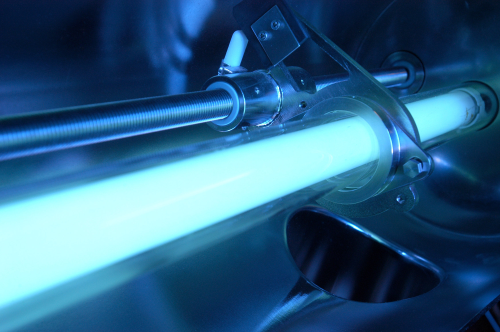
The Hite Brewing Company produces HITE beer, the best-selling brand in Korea. Its other products are Soju rice wine and mineral water. The company was founded in 1933 as Chosun Breweries and now has over 50% share of the domestic beer market. The Hite Brewery Company recently installed 25 Hanovia UV water disinfection systems at its Massan and Gangwan plants. The UV systems ensure water used in the production processes remains free from microbial contamination, ensuring a high quality, pure final product. Seven units are installed at Massan and 18 at Gangwan. In Massan the UV is used to treat clean-in-place (CIP) water (three units), cooling water injected after the CIP (three units), and activated carbon-filtered water (one unit). At the Gangwan plant three UV units are used to treat water after deaeration and the remaining 15 units treat activated carbon-filtered water. CIP is used for cleaning the interior surfaces of pipework, vessels, filters and other process equipment. CIP water must be completely free from microbial contamination; otherwise it could infect the whole system. As CIP uses very hot water, pipework and vessels need to be cooled down afterwards and before beer production can recommence. Cooling water also helps flush out the remaining CIP water, which contains acid and caustic soda. The purity of the cooling water is therefore extremely important to prevent any residual contamination. Activated carbon is commonly used in water treatment for decolouring and deodorisation, due to its strong adsorption properties. This adsorption can also remove residual chlorine from the water, leaving the post-filter water vulnerable to microbial contamination. UV therefore plays a vital role in ensuring the post-filter water is adequately disinfected. Deaeration removes dissolved oxygen from water prior to the addition of yeast, a key part of the brewing process. Any contamination of the deaeration water could kill the yeast, meaning the whole batch would have to be destroyed. UV is ideal for this step as it is quick acting and effective without producing any unwanted disinfection by-products which could affect the yeast. “When Hite was considering UV for the first time it looked at a number of UV system suppliers,” commented Ying Xu, Hanovia’s Asia Pacific Sales Manager. “We were selected as our UV systems not only produced the highest microbial reduction rates, but we also offer a comprehensive and cost-effective spare parts and maintenance service. Hite now uses over 45 Hanovia UV systems in its breweries across Korea, including the latest project at Massan and Gangwan.” “According to the company it also needs to do CIP less frequently, it uses less preservative in the finished product, and the final water has no unwanted residuals, so the taste and colour is not altered in any way. This all adds up to a cleaner, greener process and product,” she added.
The benefits of UV
Hanovia, a subsidiary of Halma plc, adds that meeting the increasingly rigorous hygiene standards required in the brewing and beverage industries is a real challenge. If improvements need to be made to plant and equipment, they need to bring quick returns on the investment and measurable improvements in product quality. For manufacturers seeking to improve the quality of the end product, Hanovia says that UV is an economic, realistic option. It is an established method of disinfecting drinking water throughout the world, and is also widely used for high purity applications such as pharmaceutical processing and microchip manufacturing, where water of the highest quality is essential. There are no microorganisms known to be resistant to UV – this includes pathogenic bacteria such as Listeria, Legionella and Cryptosporidium (and its spores, which are resistant to chlorination). The company claims that UV disinfection systems are also easy to install, with minimum disruption to the plant. They need very little maintenance, the only requirement being replacement of the UV lamps every 9-12 months, depending on use. This is a simple operation that takes only a few minutes and can be carried out by general maintenance staff.




